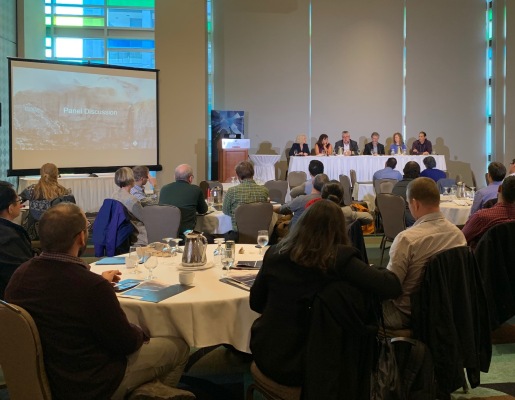
Engineers and Geoscientists BC’s “The value of Indigenous engagement on engineering and geoscience projects,” was a first-of-its-kind.

On September 24, 2019, Engineers and Geoscientists BC launched a new webinar/workshop entitled “The value of Indigenous engagement on engineering and geoscience projects.” The hybrid event was the first of its kind in Canada and grows out of the broader work that the regulator is doing to address recommendations of Canada’s Truth and Reconciliation Commission.


The day-long event was focused primarily on informing engineers and geoscientists about approaches to public consultation with Indigenous community members. Also important to the session was a discussion of the value of Indigenous traditional knowledge of specific land and resources uses from a technical perspective.
In the introductory section, presenters provided an overview of a case study engineering project that would be built on Tahltan First Nation Territory in the Yukon, an overview of the recognition of the Rights of Aboriginal Peoples of Canada, and the process for conducting an Open House to consult with the local community on the project development. Within the context of the case study, presenters highlighted that not all Indigenous communities engage in the same way and there are often departments within First Nations communities with expertise related to engineering, geoscience, natural resource use, and land-use planning.
Following the introduction, the first section of the workshop discussed proposals for a site where access roads were under consideration. Discussions revolved around how to assess the various risks and factors in assessing the different proposals.
Nalaine Morin, Principal of ArrowBlade Consulting Services and an Indigenous engineer with the Tahltan Nation, led the next section, where she provided background on governance structures and resource decisions from a First Nations’ perspective. Morin went on to explain how the access roads proposed in the first section would be evaluated using knowledge of Indigenous hunting and fishing camps, medicinal plant harvesting locations, culture camps, burial grounds, trails, and other significant sites.
Morin also provided a list of general strategies for meaningful engagement with Indigenous communities when working on projects:
- Engage early with community leaders
- Ensure transparency of information and intentions to inspire trust
- Establish relationship of joint cooperation and mutual respect
- Work constructively to address concerns prior to submission of regulatory applications
- Support shared planning of infrastructure projects
- Provide business development opportunities for Indigenous communities
- Encourage and support capacity development for Indigenous communities
- Collaborate on application development with Indigenous communities
The afternoon section sought to integrate some of the day’s learning and included breakout groups for in-person attendees with role-playing of an open house for the project discussed earlier.
All in all, the workshop provided a valuable first-step towards better meshing the work of engineering and geoscience with the rights and perspectives of Indigenous communities. Interaction between participants and speakers was considerable, with lots of questions and room for future exploration of how to work towards improving in this area.


